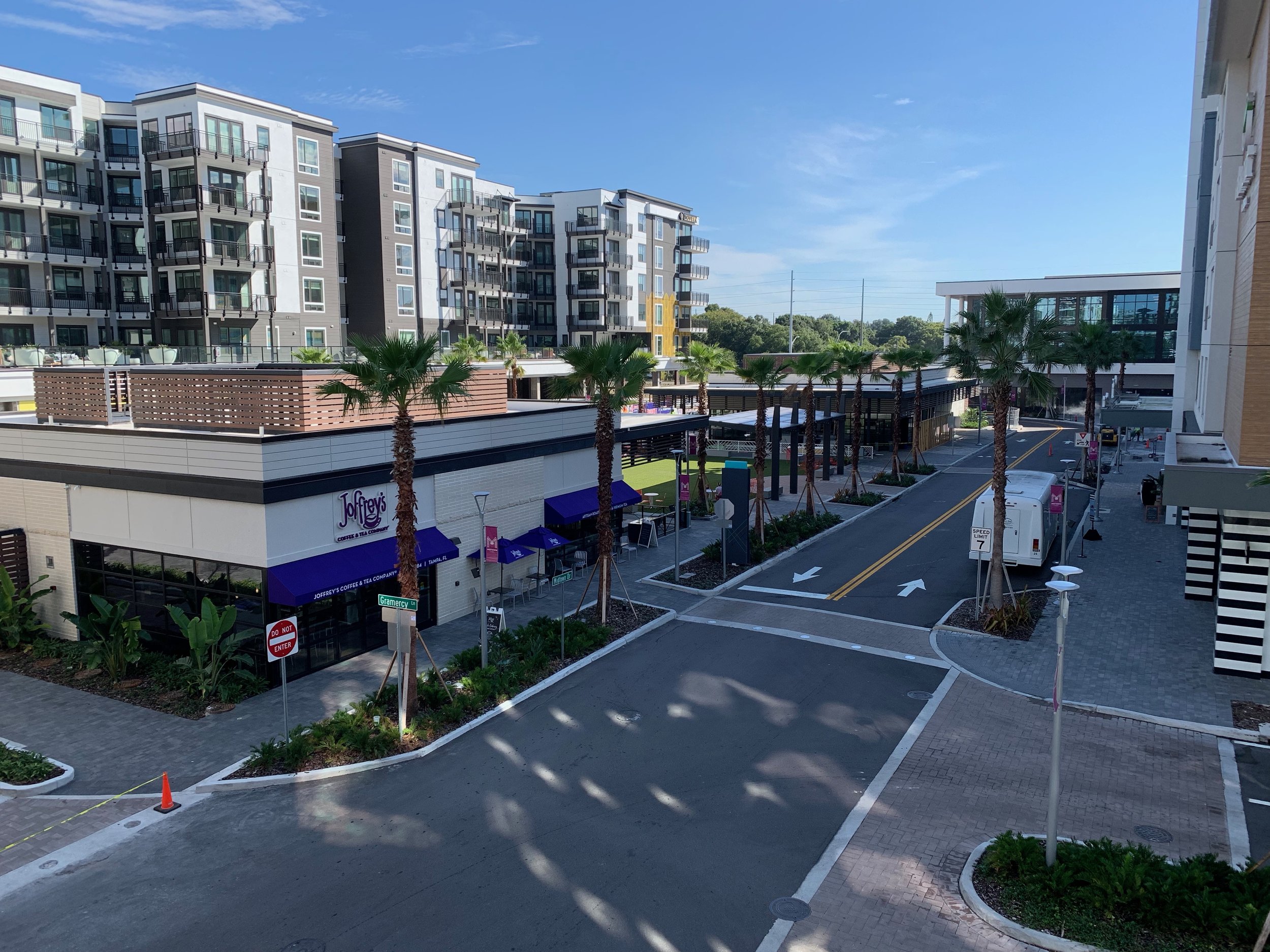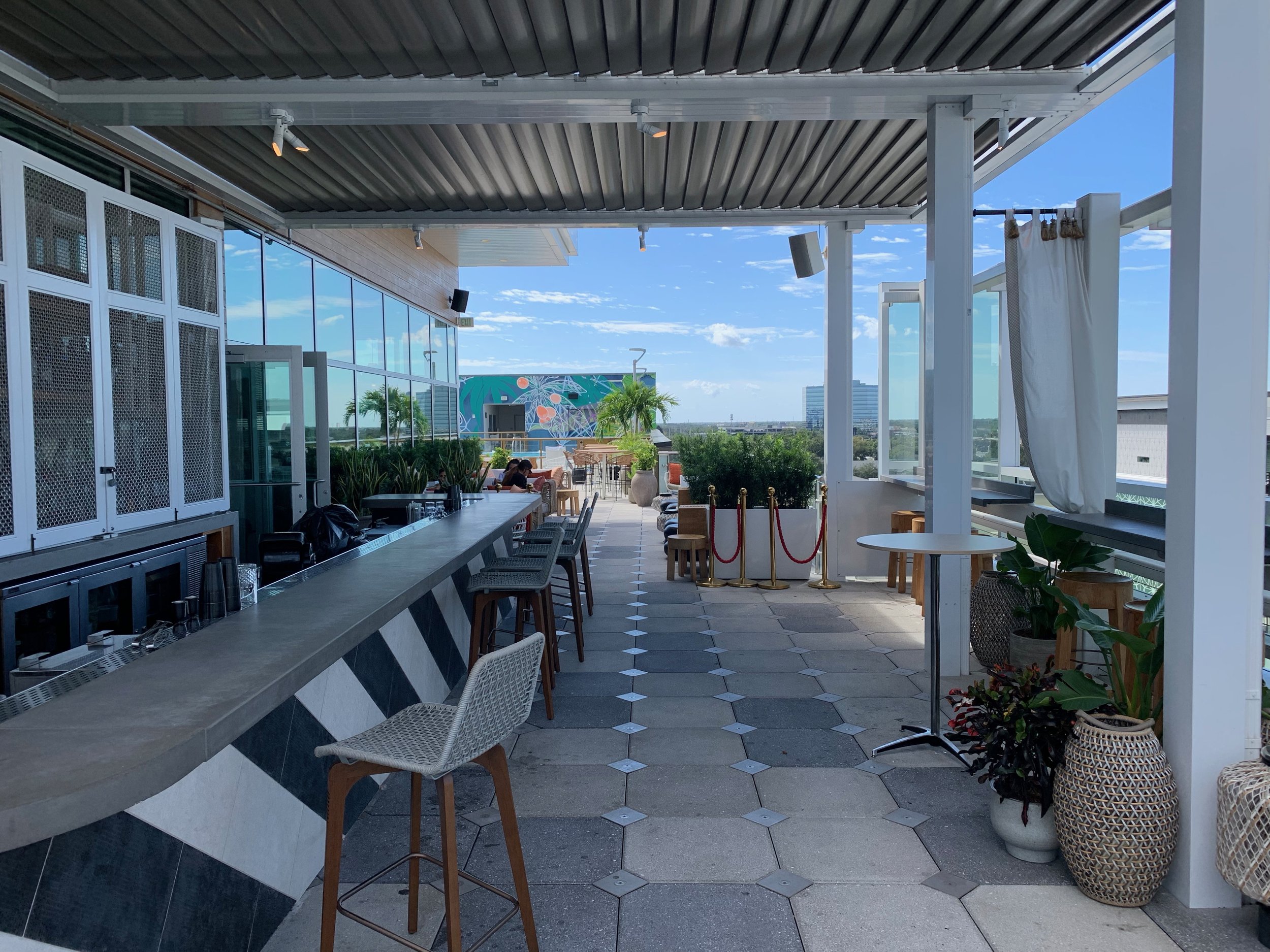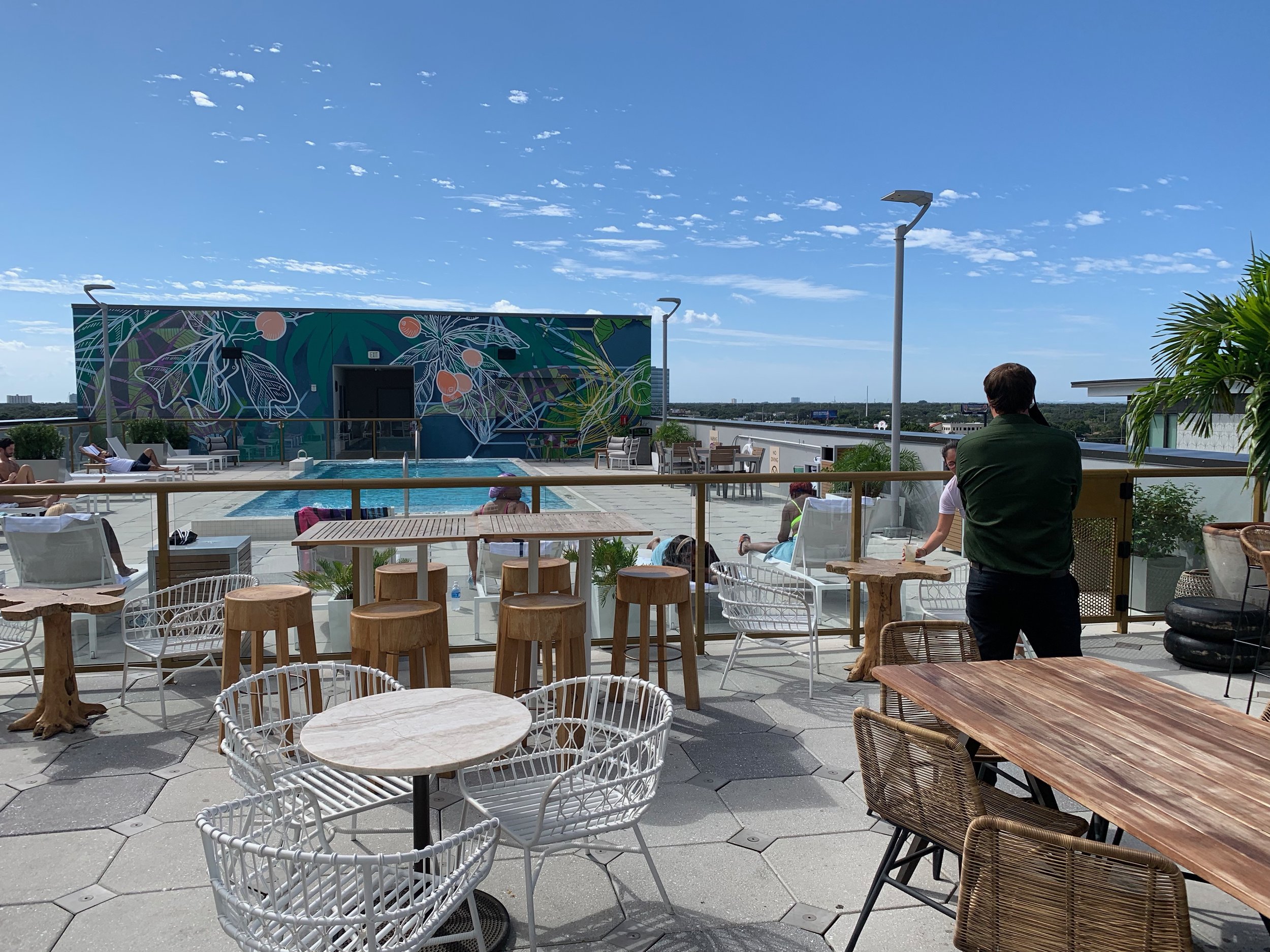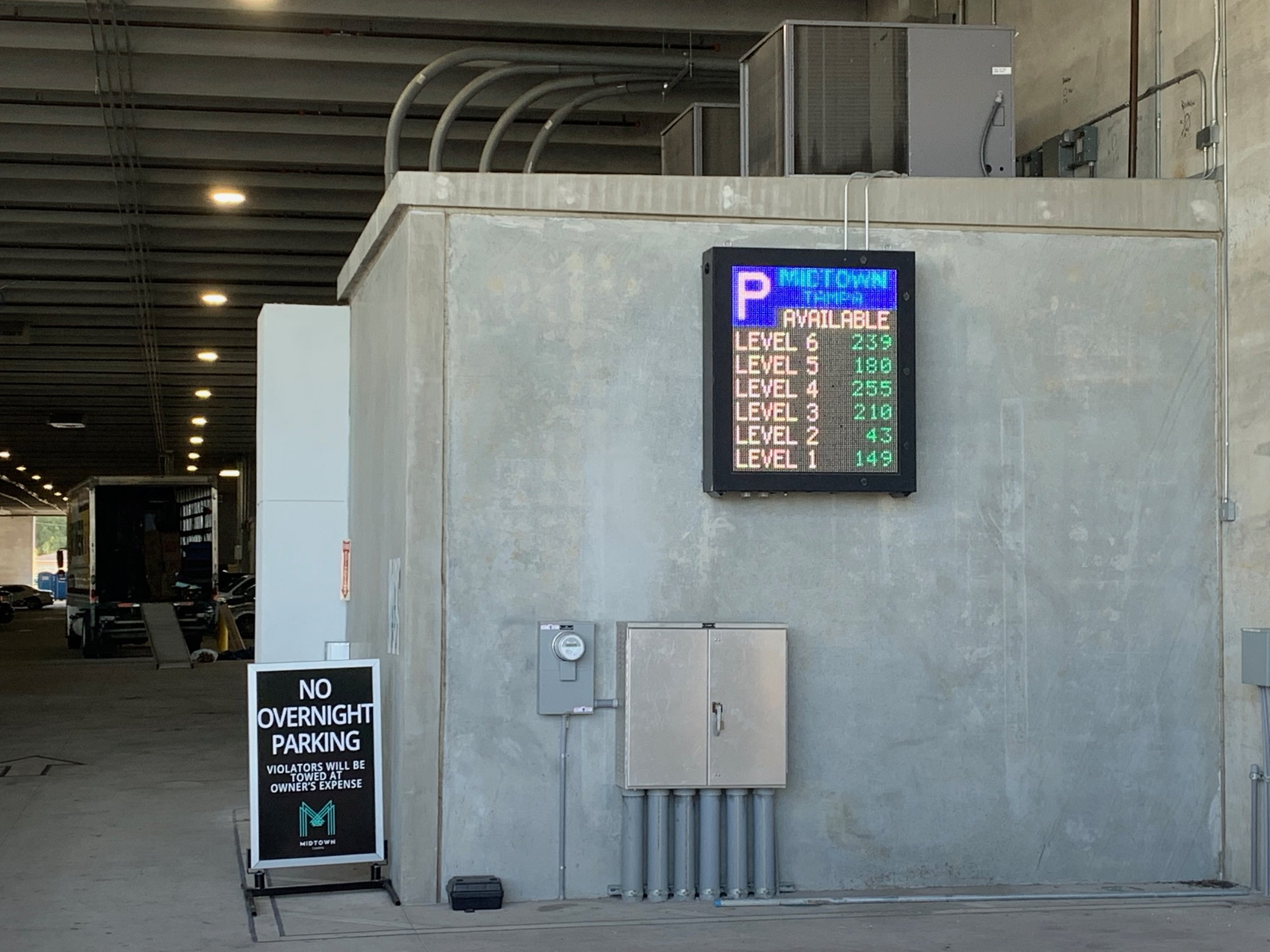Mixing it Up in Midtown Tampa
Midtown Tampa is the kind of instant city that 20 years ago I would’ve raved about. It’s another great example of The Urban Experiment.
This is a mixed-use, walkable development that has been created out of whole cloth west of downtown, near the airport. It’s a sort of second generation version of these types of projects, and measurably better than the first generation.
Before I describe it further, though, it’s interesting to trace a brief history of apartment communities in the US.
Not long ago, not far away
In America, renting an apartment has been a choice of a minority of households since the New Deal incentivized home ownership. About 1/3 of households today are renters, though early in the twentieth century it was close to 2/3. I won’t comment on if that was good or bad policy. It’s just to note the context, note the incentives and how we’ve changed.
Apartments were most commonly rented in small buildings in that previous era. They were the Missing Middle types so often discussed, and highlighted very well by Dan Parolek of Opticos Design. Yes, there were larger buildings as well, and a wide variety of SROs, apartment hotels and boarding houses. But most of what housed people were ancillary apartments, duplexes, triple-deckers, fourplexes, etc etc. This was very common for middle-class people, virtually all over America.
As we became wealthy, single family ownership became all the rage, egged on by financing incentives and regulatory changes (zoning). At the same time, larger capital flows became more dominant in real estate, and the nature of apartment living began to change. Apartments increasingly were built in larger “complexes” of 100 or 200 units all at one time in one location. In order to make apartment living an attractive alternative to home ownership, and not just for the poor or those without choices, developers began adding “amenities” such as pools and common green spaces. Those were the sorts of things not even contemplated in the "Missing Middle" era. Back then, an apartment was just a place to live in a neighborhood, no different than the house next door or around the corner. The “amenities” were often in public parks.
As time went on, the arms race for amenities ramped up. Soon were added fitness centers, spas, covered parking, valet services and more. Newer apartment complexes today are often touted as “luxury apartments.” In addition to the amenities, they also tout granite countertops, stainless steel appliances and whirlpool tubs in the units. Going after the renter by choice market has necessitated this push to go ever more upscale and out-class the competition. That's not surprising, it's just a certain element of markets and competition at work.
The Walkability Factor
Now enter the 2000s, and the slow but noticeably growing interest in urban living. In some cities, the newly thriving commercial districts, walkable to many apartments, became a new, sexy amenity. Many smaller developers smartly capitalized on this with renovations of historic buildings, loft conversions and some new urban infill. They helped create an urban market that had some of the new amenities renters (and some home owners) were looking for. Their buildings didn't have pools or covered parking, but they had cool bars and restaurants to walk to, art galleries, lively streets and more things that appeal to a certain part of the population.
The folks who deploy big investment capital naturally noticed this change. And they didn’t want to miss out on the trend. For over a decade, every healthy market has seen an influx of large “luxury apartment” buildings of about 200 units in urban areas, complete with all the amenities they’re used to providing in suburban locations. You guessed it - the pool, the fitness center, covered parking, etc etc.
Again, I’m not passing judgment. This is simply an example of how development happens in modern America. In many cases, these larger entities deploy tens of millions of dollars to buy and upgrade buildings, build new ones and create portfolios of hundreds and hundreds of apartments. It’s very smart business. Some of the end results can be excellent, some very mediocre, but nearly all have been well received in the marketplace. Urbanist snobs like me might ask questions, but clearly the people renting the apartments are responding positively.
Enter Midtown Tampa
Midtown Tampa is simply another in the latest version of this phenomenon. It’s a brand new place, by different accounts, either 12 or 30 years in the making.
The apartments are very well appointed, the amenities are first-class. It also includes fantastic eating and drinking options, some retail, a Whole Foods and new office space. It truly is an "instant city" in the sense it has so much of what someone might need as part of a daily or weekly routine in one compact location. Despite the Florida heat, you can walk from your apartment indoors to the gym, where you can work out in perfect air conditioned comfort. This is the new, 21st century apartment complex.
Midtown has the trendiest new bar in town, and it looks like the kind of place I'd enjoy spending too much time in. It has a "signature scent." Yes, that's actually a thing. It’s not a cheap place at all, and not intended to be. The rents are about $3 per square foot. That's the top of the market in Tampa, and in many similar markets in the US. You can do the math on what a simple, 900 square foot two bedroom apartment costs.
Everything in this development is impeccably managed. They do everything well that our cities do poorly. Trash and cleanliness, security, parking, and public space management are all incredibly well thought-through and executed. It gives people who advocate for privatization of city governance great ammunition.
So again, I'm not saying this is BAD. I think there's much to admire and like. It's just that this is another example of how we only produce this kind of development anymore. It's either large single-family subdivisions on the edge of the city, or mega-investment "instant cities." There's nothing in between. It's not just that the Missing Middle buildings are often zoned out of existence, it's that the entire ecosystem of finance, acquisition, construction and more seems to make it virtually impossible to do again.
There’s no space in our system for the kind of change that gave us Chicago, or even my city. The professionalization of everything has created this predicament where the entire system pushes for bigger and more complicated projects and efforts of all kinds. This is not a “find a magic policy” problem. It’s the direct result of decades of policy, all made with good intentions and responding to constituents, but quietly damaging our systems piece by piece.
This isn't healthy for our cities, and it's especially not healthy for a democratic society. In this system, there seems to be little opportunity for people to build for themselves, to build wealth for themselves, and create the kinds of "messy" places that urbanists like myself most admire. The only option is to do it "sub-rosa" as Johnny Sanphillipo would say. And he's right. That's exactly what happens in the real world, often outside the view of the local authorities.
I have no objection to Midtown Tampa at all. In fact, it's quite well done in many ways. But this simply cannot be the only solution to the development of our cities. We've got to unleash the swarm, as I like to say, or else all the current problems we fret about will only get worse.
More to come.
If you got value from this post, please consider the following:
- Sign up for my email list
- Like The Messy City Facebook Page
- Follow me on Twitter
- Invite or refer me to come speak
- Check out my urban design services page
- Tell a friend or colleague about this site











